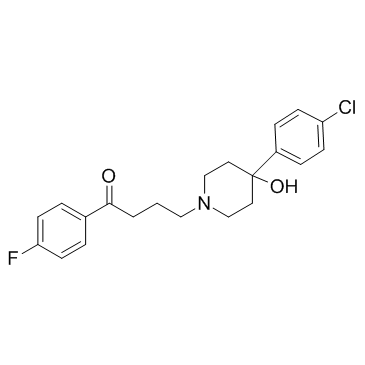PLOS Medicine
2015-02-01
The role of Abcb5 alleles in susceptibility to haloperidol-induced toxicity in mice and humans.
Ming Zheng, Haili Zhang, David L Dill, J David Clark, Susan Tu, Arielle L Yablonovitch, Meng How Tan, Rui Zhang, Dan Rujescu, Manhong Wu, Lino Tessarollo, Wilfred Vieira, Michael M Gottesman, Suhua Deng, Livia S Eberlin, Richard N Zare, Jean-Martin Billard, Jean-Pierre Gillet, Jin Billy Li, Gary Peltz
Index: PLoS Med. 12(2) , e1001782, (2015)
Full Text: HTML
Abstract
We know very little about the genetic factors affecting susceptibility to drug-induced central nervous system (CNS) toxicities, and this has limited our ability to optimally utilize existing drugs or to develop new drugs for CNS disorders. For example, haloperidol is a potent dopamine antagonist that is used to treat psychotic disorders, but 50% of treated patients develop characteristic extrapyramidal symptoms caused by haloperidol-induced toxicity (HIT), which limits its clinical utility. We do not have any information about the genetic factors affecting this drug-induced toxicity. HIT in humans is directly mirrored in a murine genetic model, where inbred mouse strains are differentially susceptible to HIT. Therefore, we genetically analyzed this murine model and performed a translational human genetic association study.A whole genome SNP database and computational genetic mapping were used to analyze the murine genetic model of HIT. Guided by the mouse genetic analysis, we demonstrate that genetic variation within an ABC-drug efflux transporter (Abcb5) affected susceptibility to HIT. In situ hybridization results reveal that Abcb5 is expressed in brain capillaries, and by cerebellar Purkinje cells. We also analyzed chromosome substitution strains, imaged haloperidol abundance in brain tissue sections and directly measured haloperidol (and its metabolite) levels in brain, and characterized Abcb5 knockout mice. Our results demonstrate that Abcb5 is part of the blood-brain barrier; it affects susceptibility to HIT by altering the brain concentration of haloperidol. Moreover, a genetic association study in a haloperidol-treated human cohort indicates that human ABCB5 alleles had a time-dependent effect on susceptibility to individual and combined measures of HIT. Abcb5 alleles are pharmacogenetic factors that affect susceptibility to HIT, but it is likely that additional pharmacogenetic susceptibility factors will be discovered.ABCB5 alleles alter susceptibility to HIT in mouse and humans. This discovery leads to a new model that (at least in part) explains inter-individual differences in susceptibility to a drug-induced CNS toxicity.
Related Compounds



